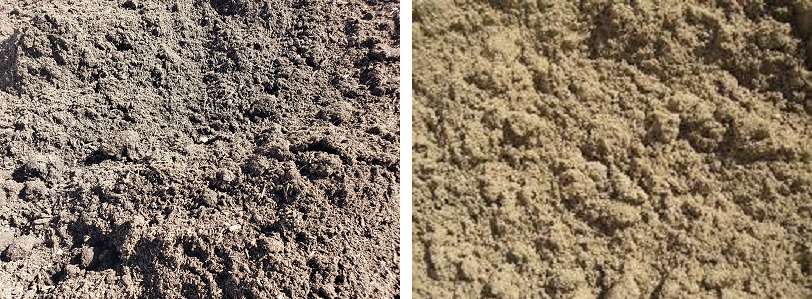Search...

Is your landscaping project better suited for sand, soil, or a combination of both? Ultimately, sand is a type of soil, as is peat, silt, loam, and clay. All of these soils are created when rocks are broken up, usually by natural forces like salts, wind, or water. Soil is actually a pretty broad definition, especially in the world of landscaping, and refers to the top layer of the earth. However, sand is unique because it’s made up entirely of rocks and sometimes mineral grains.
Sand is formed when these mineral particles and rocks are finely and somewhat evenly divided. Sand is different in various parts of the world but is generally comprised of calcium carbonate, silica, and a variety of other materials. A single grain of sand is non-porous, so it doesn’t hold water. However, sand particles have plenty of space between them to allow for free-flowing air passage. Soil is different because it’s mostly comprised of organic matter from plants and animals that live in or use the soil. Soil is porous, so it holds water and the little particles that make up soil are packed tightly together. Soil can be penetrated less easily than sand, so water can even sit on top of it.
Why Use Sand?
Sand can be a fantastic choice for many landscaping projects. One of the most common uses is in between pavers. Sand has a leveling quality so that pavers don’t break or move as easily. You can also use sand to create concrete for walkways, edging, outdoor patios, and much more. Of course, sand is also a popular choice to create play areas like a sandbox. Sand might also be your best bet to go under play areas to allow for a soft landing. Many sports areas are created largely with sand, using pavers or wood as the “rim.”
Alternatively, garden soil is designed to nurture certain kinds of veggies, flowers, or herbs. The exact soil makeup for your yard or garden will depend on what types of plants you want to support. There’s also “black dirt,” which isn’t the best choice for plants but can be a great option for filling in areas, prepping yards for sod, or making walkways. Black dirt has an especially large amount of organic material from plants. “Compost” is the term for organic material that has decomposed. It’s not an alternative for soil or black dirt, but rather an additive. Compost can be made of animal or plant material (or both) and is full of nutrients to make the soil even healthier for plants.
Making Your Decision
Sand is a type of soil, and all types of soil have various benefits depending on your goals. It’s very common for gardeners and homeowners to select a variety of different soils for various parts of their yard and gardening projects. Within these subsets of soils (such as sand or compost), there is also a myriad of additional types. The Dirt Bag will work with you to determine your needs and design an order just for you.